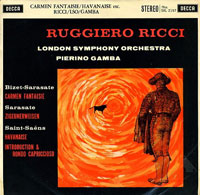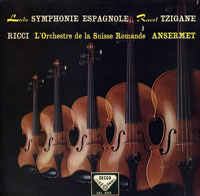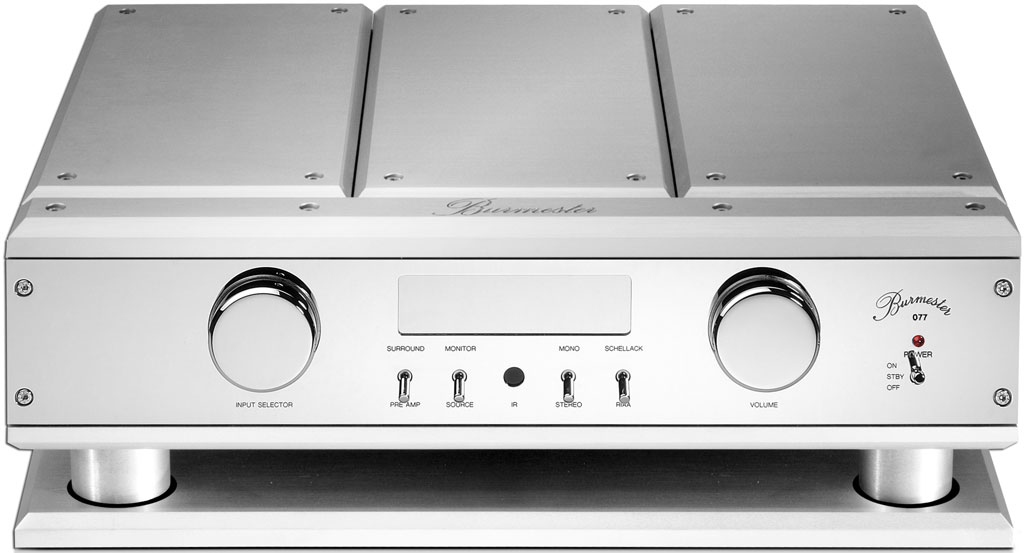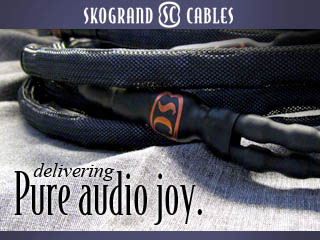One word of warning though, if you do decide to buy the “Seven Sword” soundtrack and the sound comes out flabby and unexcited, I can assure you the problem lies not with the quality of the recording but likely with your system. Ignorance is often time a bliss, and once your system has been tested by the scale of Kenji Kawai’s ”Seven Swords” and found wanting, you may never be satisfied again until you buy the Burmster system, so let the listener be forewarned, a $11 CD might lead to substantial spending.
With their prodigious power, do not for a moment think that the Burmester was only about brute force, in fact they are anything but. Written down numerous times in my listening notes was “the presence of a pristine and polite elegance” to the Burmester house sound which makes them unique. In addition to being powerful, they were accurate but not at the expense of being sterile or analytical. Play Neil Young’s “Old Man” from the 1971 Live at Massey Hall album, and the system delivers crystal clear snappy plucking of the guitar strings. His voice was portrayed with sensational accuracy, without any blurring or artificial richness. Some listeners might not want this much accuracy and would opt for a sound which masks the imperfections of the recordings, however subtle they may be, one that artificially smoothed out with the rest of the sound.
On Ian & Sylvia’s 1963 close-miked recording of “Four Strong Winds,” again the voices were nominally cleaner without ever veering towards the warmer side of the spectrum. The sound was decidedly neutral, accurate, clear, but most importantly, human-like. I would never let myself be mistaken to believe I was listening to tube amps, as I sometimes would with the McIntosh MC2KWs which were much warmer sounding by comparison. With the Burmesters, I got the impression that voices were coming from lighter human body, with the ability to be more agile and nimble. I do not want to give the impression that they were lean or clinical, but the overall tonality was unmistakably more neutral versus the McIntosh. The treble was livelier than the mids, while the lower mids were cleaner, faster and with more transparency.
The Burmester’s sound staging was excellent, and by that I mean it had the ability to project images with pinpoint accuracy with a high degree of depth perception. On all the recordings known for having good sound stages such as Britten’s Noye’s Fludde (Argo ZNF1, ED1), Britten’s Young Person’s Guide to the Orchestra (Capitol SP8373, CISCO Reissue), or Delibes Sylvia (DECCA SXL 6635/6, ED4), there was a clear and distinct separation between the empty space and the individual instruments which occupies its rightful location. The ”edges” of the sonic image were sharply focused, contrasted against the backdrop of the complete soundstage picture which was well projected beyond the confines of the walls in my room, with a remarkable width, height, depth perception and 3D layering in between.
If piano performance is still the ultimate test for high end audio as people often say, then the Burmester system passed the test with flying colors. In fact, I would go so far as to say that the Burmester rendered the most accurate piano notes I have ever heard on my system. Take Julius Katchen’s performance on Beethoven’s Piano Concerto No. 3 (Decca SXL 2016, ED1), or Naum Starkman’s Chopin performance on CD (Pope Music ), the grandeur of the piano notes were rendered with full clarity and accuracy down to the very last low bass range. The difference in sound between the Burmester system versus my own McIntosh setup almost resembles the difference between a New York Steinway versus a Bosendorfer, with the Burmester resembling the former. It had a firmer and crisper action on the piano keys, while the McIntosh offered a mellower and weightier presentation with more harmonic decays.
Equally satisfying was Vivaldi’s “Four Seasons”, performed by Henryk Szeryng and the English Chamber Orchestra [Philips 6500 076], the Burmester displayed tactile liveliness on Szeryng’s violin against a backdrop of well defined orchestral strings. It reminded me of the sound I heard sitting in the forward middle section of a live orchestral performance, not overly forward and upfront, but with just enough live presence for the listener to decipher the separation between instruments with clarity and transparency. Never once were string instruments hard or bright-sounding, even when I played the somewhat aggressive sounding performance of Lalo’s Symphonie Espagnole performed by Ricci (DECCA SXL 2155 ED1), and Sarasate’s Zigeunerweisen also performed by Ricci (DECCA SXL 2197 ED2).
 |
 |
 |
If maintaining brand consistency would lead to sonic benefits, then the argument is certainly true in the case of the Burmester system. With five tonearms, five cartridges and four phono stages on hand, I did spend hours and hours going back and forth between different combinations of such. The four phono stages I have on hand are all in the same price category as the PH100, including the Kondo M7/KSL-SFz, AMR PH-77, FM Acoustic FM122 Mk II and Audio Research Reference II SE, yet regardless of what cartridge and phono stage combination I tried with the Burmester preamp and power amp, the system delivered the best overall tonal balance when it was played through Burmester’s own PH100 phono stage.
So far, it sounded as if the Burmester sound was invincible and difficult to beat in any scenario. Nonetheless, their speed and fast transient response may not suit all systems. If your front end or loudspeaker are more lean and analytical, then the Burmester may not be the best choice. But for neutral or even warmer sounding setup, the Burmester system may deliver you many hours of satisfaction, it certainly did in my case.
Conclusion
If you are looking for a soft, warm and tubby ride like a 67 Cadallic wallowing on its waterbed-like suspensions along the San Diego sea coast, then look elsewhere. If you are looking for a romantic stroll along the Tuscan hillside in a Citroen DS, with the seductive female vocals whispering in your ears during the ride, then really, look elsewhere. The Burmester experience was unmistakably a ride which resembles kicking down on a Porsche Panamera at 120 mph on the Autobahn, with fast response, control, and most importantly in style and elegance.
As a reviewer, I have committed to not write reviews resembling the marketing paragraphs which you often find in glossy product brochures. It often amazes me the number of reviews on the market which end with line “This is yet, the best product I have ever heard.” Whilst this may very well be true, the irony lies with the fact that each and every product prior to that was also declared as “yet the best he has ever heard”.
My goal has always been to write useful reviews where the sonic description can help readers decide for themselves whether the sound will be a proper match for their system. To this end, I hope that my goal has been achieved in this review. However, keep in mind that the review is on the Burmester system as a whole (PH100 Phono, 077 Preamp, and 911 Mk III Amplifiers) so the sonic descriptions represent a system, as time constraints did not permit me to carefully determine the incremental changes of individual pieces within my system.
At the end, “the Byzantine Empire has not reigned in, and Rome has yet to fall.” I did not replace my system with the Burmester, but it wasn’t because I was not taken by the sound, in fact I was completely satisfied and it was the only system which I would want other than my own. The real reason was that I haven’t yet found the ejector seats button on the 077 Preamp, for my significant half would surely send me to the dog house if she found out I had incurred additional expense on audio equipment.
I will not shoot myself in my foot by saying the Burmester system is the best I have ever heard, because “The Best” in high end audio is a meaningless word in my dictionary. But would I recommend the Burmester system? The answer is an unequivocal and a resounding yes.
- ← Previous page
- (Page 4 of 4)




Many thanks for your thoughtful review – although it wasn’t a review of the phono stage per se, I could see that there are some very strong elements in this line that are worth striving for in a system. The elements of their line are out of my price range, but I am focusing at present on their phono stage and wondering whether it will elevate my analogue experience.
thanks again,
rob
Of the many phono stages I have owned in the past, the Burmester PH100 is currently my reference. It is remarkably full bodied, with a strong strong dynamic contrast. Despite being a solid stage German made phono stage, it has even more body and weight to my tube AR Ref SE II, and renders the belief that solid state phono stages are cold and sterile, invalid. It most certainly does not apply to the Burmester PH100.
“A fancier, chrome version of the same remote can be purchased from Burmester for an additional $1,675.” / fancy indeed.
I am on the market for Burmester product,please send me a price list or email me the information